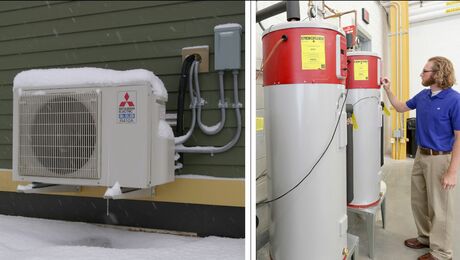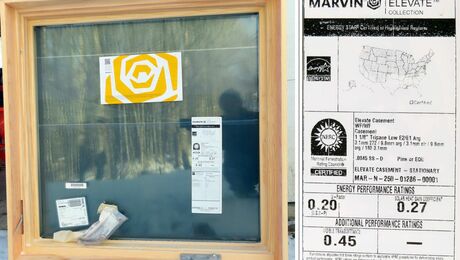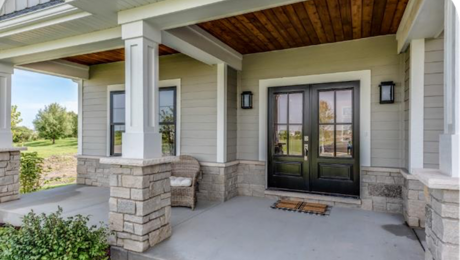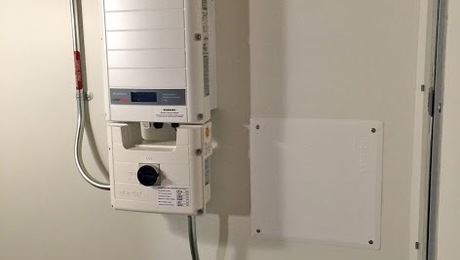Minisplit Drainage and Mold Problems
Hi all – I installed mini splits to heat and cool my house when I renovated it 8 years ago. I’ve have had drainage problems and leaks in two units in two of my bedrooms. Recently I noticed mold when I looked inside them, so today I took one apart and found it absolutely full of mold. I cleaned everything out and put it all back together, but when I had the drain disconnected, I noticed that the drain pan drained on the right side, but then the drain line ran back to the left, almost all the way to the opposite side of the mini split, where it entered the wall. Does that sound normal – I’m thinking if the drain line enters the wall on the left side of the unit, the unit should drain from the left side of the drain pan. In addition, after I disconnected the drain pan, condensate would pour out of the drain line whenever I pointed the drain line downwards. That’s telling me that a lot of condensate is sitting in that drain line as it runs from the right to the left side of the unit before draining down the wall. Is this a proper installation? If not, is there anything I could do to fix it? Any help would be greatly appreciated.
Kevin
GBA Detail Library
A collection of one thousand construction details organized by climate and house part









Replies
I've done drain as you describe. Provided the unit is level or sloped a bit to the right and the drain line running across the back is sloped to the left, it will work.
By the sounds of it, something is not sloped properly. If there is not enough height to fix it, you can always move the drain to the left side. All units have drains on both ends, one is just plugged, move the drain line to this side and plug the original one. Make sure the head is level or sloped a bit to the left.
As for mold, some units have an auto clean feature that dries the coil when the unit shuts off. This helps a bit if you are not running the unit all the time but periodic cleaning is still needed which is a pain. This is one of the drawbacks of wall mounts.
Thanks for the reply. Will it be a problem that my drain lines are run through my walls and the connection between the drain line and the insulated tube will be buried in the wall? Thanks again.
Kevin
This is not a problem and done often when going from the inside of the house directly outside. You do have to make sure the nothing gets kinked when the head is reinstalled on the wall which is hard if the drain is routed inside and interior wall not directly out.
Any kinks or dips on the drain line will cause it not to drain. Avoid the flimsy corrugated drain line that some units ship with, I mostly use PVC or black Polyethylene irrigation pipe.
Be very careful with the drain line often there are paper thin soft plastic that will leak if you look at them hard.
It is important that the drain is always lower than the drain pan. It would be nice if the drain always had slop to daylight but given how flexible the tube is that is not going to happen. In fact having a trap at some point in the line is desirable in keeping outdoor air from entering the building thru the drain.
Mold clogged condensate drain line is a common service call for any AC unit. Annual cleaning is likely recommended in the manual.
I like to put about 6 to 8 inches of bare copper in the drain pan. The wet copper will corrode and be washed down the drain killing any mold.
Or you can buy algae tablet for the pan.
https://www.lowes.com/pd/Frost-King-6-Pack-Air-Conditioner-Pan-Tablets/3799425?cm_mmc=src-_-c-_-prd-_-app-_-google-_-appliances-_-DSA_APP_235_Floor-Care-Small-Appl-AC-And-Dehums-_--_-0-_-0&ds_rl=1286981&ds_rl=1286947&gclid=CjwKCAjw87SHBhBiEiwAukSeUdRJObV3P6t95WRCb157ydTTLVn3uFAePyaQT7SAKvfsxkI5-OG0SBoC0KoQAvD_BwE&gclsrc=aw.ds
Walta
Thanks. That copper idea sounds good. I might try that.
Kevin
Hi Kevin,
I just did a post closely related to this topic:
https://www.greenbuildingadvisor.com/article/how-to-prevent-condensate-leaks-from-ductless-heat-pumps
Kinks, traps, and bad pitch are the main causes of installation-caused issues. Running the system at medium to high fan speed can help cut down on condensation on the blower wheel itself.
Jon beat me to it. That article speaks directly to your issue. And Jon is an excellent resource for just this kind of troubleshooting.
Awesome. I'm going to take a look at the article now. Thanks!
Thanks again. That answered all of my questions!